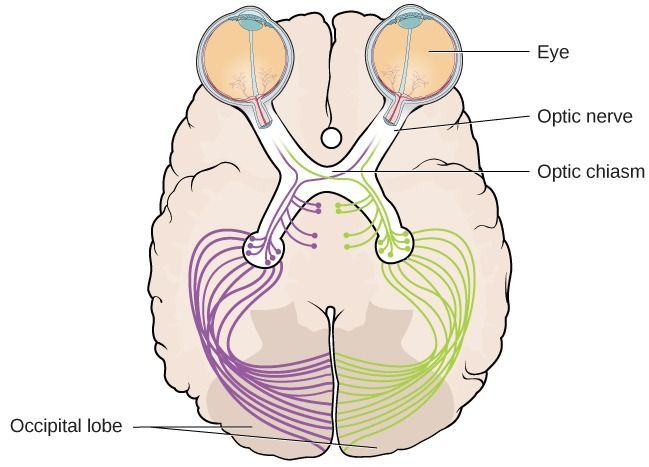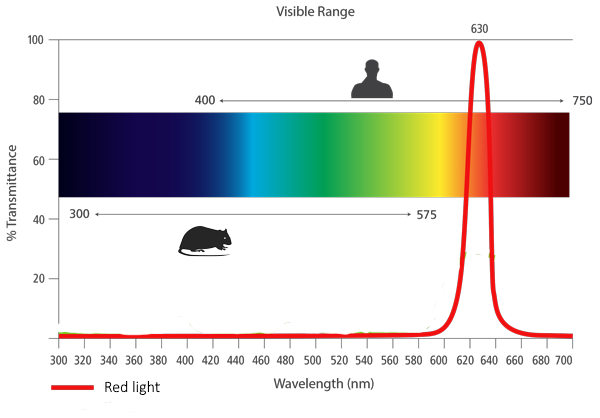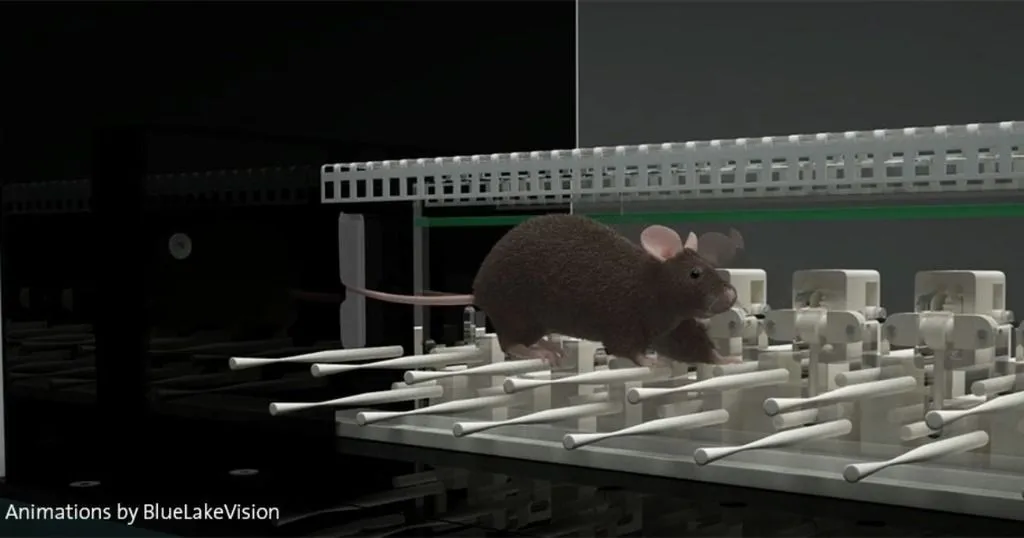New method for early detection of Alzheimer's disease
The color x-maze can be used to pick up symptoms of Alzheimer's disease in AD-mice months before traditional cognitive tests.
Posted by
Published on
Tue 25 Oct. 2022
Topics
| Alzheimer's Disease | EthoVision XT | Mice |

Almost everyone reading this will know someone who has Alzheimer's Disease, or a similar form of dementia. Six millions Americans (1) and 10 million Europeans (2) are suffering from the disease. Many countries have an aging population, so if no progress is made in prevention and treatment, it will only get worse.
That means that there has been a huge volume of research done in the last decades in this area, both with human subjects and with animal models of the disease. It is hard to investigate in humans, not only because sometimes invasive techniques are unavoidable, but simply due to the timescale. To understand how the disease works and how to treat it, it is necessary to see what is going on in its early stages. With people, that can be many years before those who have it become aware of its symptoms. However, animals like mice only live a few years, so they can go from adult to elderly within the time of one experiment.
In this blog, we explore how a new type of test enables scientists to research the onset of Alzheimer's disease at an early stage.
Alzheimer's disease
Although there is still no good medicine available to treat it, we now know that a healthy diet and regular exercise are really important in holding off the symptoms. We also understand a lot about its causes, especially that a build-up of protein plaques seem to be important, although the jury still seems to be out on how much that is cause, and how much affect.
Some people in their 60s develop mild cognitive impairment (MCI). MCI is characterized by forgetfulness and problems with cognition. Some people with MCI then go on to develop Alzheimer's (or other forms of dementia) when those problems get severe enough so that they interfere with their daily life. They also develop other symptoms like getting lost and other behavioral changes.
The eye is considered by some anatomists to be part of the brain and one of the lesser-known effects of Alzheimer's is that it can also affect the eye's retina, also in the earlier MCI stage. Protein plaques can build up, and the nerves can degenerate (3).

Alzheimer's and vision
Alzheimer's patients can experience significantly impaired color and also contrast sensitivity. This gives a visual impairment which is rather like tritan color-blindness (tritanomaly). This is quite a rare form of color-blindness. People with that condition have less sensitivity in their blue cone cells. The human eye has three types of cone cell to detect color; red, blue, and green. Someone with trital color-blindness might have difficulty distinguishing red from purple, because blue is the difference between red and purple. Cataracts and glaucoma can have a similar effect, but that is due to filtering the blue out of the light. Blue color discrimination impairment has also been reported for other diseases including multiple sclerosis, Parkinson’s disease, Huntington’s disease, and Gilles de la Tourette syndrome, so its relevance is wider than just Alzheimer’s.
Color vision in mice
Although humans and other primates have red, blue, and green cone cells, many other mammals, including mice, have just two types; blue to near ultra-violet and green. That means that they will see colors a little bit like the 4% of humans with red-green color-blindness, but (like many insects) can see more differences at the blue end of the spectrum and a little beyond (4). Mice have relatively few cones, leaving more space for the more light-sensitive but monochrome (black and white) rod cells, enabling them to see well in low light. Objects seen in moonlight look monochrome to us because we are viewing them with our light-sensitive red cells.

The visual-stimuli 4-arm maze
The conclusion is that although the color vision of mice is different from people, they can detect subtle differences in color and brightness. The eyes of older mice are less sensitive to contrast. The question is, do mice from a genetic strain which gives them Alzheimer's symptoms ('AD mice') also show the sort of degeneration in color vision that people get in the early stages of Alzheimer's?
In order to determine that, Vit and colleagues developed a new type of maze (4, 5). It has 4 arms in an x-shape, which have black walls and semi-transparent white floors. The floors can be lit up with LEDs underneath with red, green, blue, and white light with variable brightness. As the mice cannot see red, this can be regarded as a control arm, which looks dark to the mice. Although mice can see near UV, this was not used due to safety consideration for the human researchers. The maze is called ViS4M (Visual-Stimuli 4-arm Maze). The position and movements of the mice can be tracked and analyzed using EthoVision software. You can see the maze in operation in this video:
Interpretation
The interpretation of data obtained with the maze relies on the fact that, as a prey species, mice naturally avoid brightly-lit areas. The mice also tend to explore the four arms is a specific sequence, before returning to the arm that they started in. AD mice show a dramatic decrease in activity, speed of movement, and how often they move between the different arms (percentage of alternation). They showed this at 8.5 months age, whereas memory problems could not be detected (with the Barnes maze) until the mice were 13-months old.
They prefer the red arm, which looks dark to them.

AD mice preferred both the green arm and the blue arm compared to the white arm, which indicates color-specific visual impairments in the AD mice. There were also color-specific effects on the transitions between the different colored arms. The AD mice moved less between the white and blue arms than wild-type mice, again indicating color vision impairment (4, 5).
Conclusions
The conclusions are that the ViS4M 4-arm color maze is a sensitive tool to assess color discrimination and contrast sensitivity in mice. Color vision guides spontaneous behavior. AD-specific impairments can be picked up with the maze months earlier than traditional cognitive tests.
Do you want to use this test?
You can obtain a complete solution from Noldus using a maze made by Maze Engineers and tracking and analysis with Noldus' EthoVision software. Maze Engineers and Noldus have an official partnership which enable them to offer an integrated solution combining Maze Engineers' high quality mazes with EthoVision's unparalleled tracking and analysis.
Acknowledgments
Part of this blog is based on the protocol published in reference 5. We are grateful to J. Vit and colleagues for permission to use their video in this blog. The mouse color wheel illustration is from https://www.colormatters.com/color-and-vision/color-vision-for-mice and the eye/brain anatomy illustration is from the open text Psychology textbook from OpenStaxCollege.
The figure showing mouse/human color vision in relation to red light was modified from a figure from https://kenall.com/Animal-Research-Lab-Lighting.
References
1. https://www.alz.org/alzheimers-dementia/facts-figures
2. https://www.alzheimer-europe.org/dementia/prevalence-dementia-europe
3. Rizzo, M., Anderson, S. W., Dawson, J. & Nawrot, M. Vision and cognition in Alzheimer’s disease. Neuropsychologia 38, 1157–1169. https://doi.org/10.1016/s0028-3932(00)00023-3 (2000).
4. Vit, J. et al. (2021a). Nature Scientific Reports 11:1255. https://doi.org/10.1038/s41598-021-80988-0.
5. Vit, J. et al. (2021b). Visual-stimuli Four-arm Maze test to Assess Cognition and Vision in Mice. Bio-protocol 11(22): e4234. DOI: https://10.21769/BioProtoc.4234. (https://bio-protocol.org/e4234).
Related Posts

Parkinson's disease research - Relevant measures in pre-clinical studies

How Ginkgo biloba helps treat Alzheimer’s
